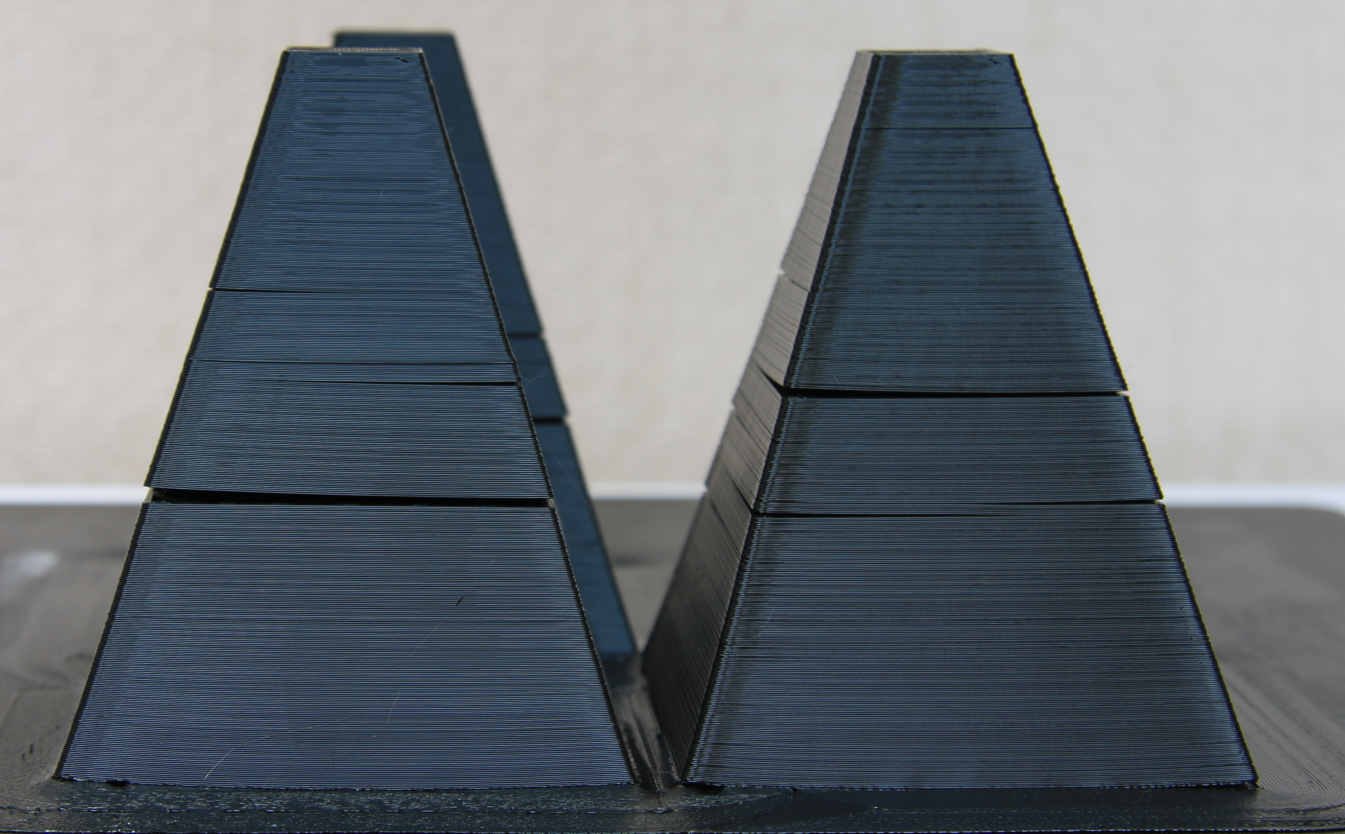¶ What is model interlayer cracking?
Interlayer cracking occurs when the layer bonding between the printed layers is weak, resulting in the layers disconnecting as shown in the image below.
This problem usually occurs when printing filaments like ABS, ASA, PC, PET-CF, PA-CF materials which are best printed in an enclosed 3D printer.

¶ Interlayer Cracking
¶ Potential causes and solutions
1. Printing filament without an enclosure
One of the most common reasons for interlayer cracking is when printing high-temperature filament like ABS, ASA, PC, PET-CF, PA-CF without an enclosed 3D printer.
The cracking occurs due to the rapid cooling of the printed layers, which generate enough force to make the printed model curve and disconnect from the previously printed layers.
To solve this problem, and avoid this issue in the future:
- Always print high temperature filaments in an enclosed 3D printer
- Before starting the print, set the heatbed temperature to the printing value, then wait for 10-15 minutes for the chamber temperature to reach a higher value
- Ensure the AUX fan is turned off, and only the part cooling fan on the print head is used on a low value
2. The bonding strength of the filament is low or the structure of the model part is weak.
Another common reason for layer cracking is the filament bonding strength. Some filaments that contain a high number of additives might have less bonding strength between the layers.
One of these filaments is Silk filament which can lead to layer cracking if it is printer too fast or with a temperature which is too low.
To solve this problem, and avoid this issue in the future:
- Appropriately increase the number of wall loops and increase the infill rate to increase the layer bonding
- Increase the hotend temperature with +5-10C
- Lower the part cooling fan slightly (please note that this could lead to a lower quality finish)
- Lower the print speed to ensure the filaments get fused together better, before they are cooled
3. Insufficient extrusion, lack of material between layers.
A less common issue for interlayer cracking is when there is a problem with the extrusion quality (extruder or hotend is partially clogged)
To solve this problem, and avoid this issue in the future:
- Start by cleaning the extruder and hotend, and perform the regular maintenance tasks.
- Unclog the hotend by doing a few cold pulls
- Increase the hotend temperature with +5-10C to improve layer bonding
- Lower the print speed to ensure the filaments get fused together better, before they are cooled
¶ End Notes
We hope that the detailed guide we shared with you was helpful and informative.
We want to ensure that you can perform it safely and effectively. If you have any concerns or questions regarding the process described in this article, we encourage you to reach out to our friendly customer service team before starting the operation. Our team is always ready to help you and answer any questions you may have.
Click here to open a new ticket in our Support Page.
We will do our best to respond promptly and provide you with the assistance you need.